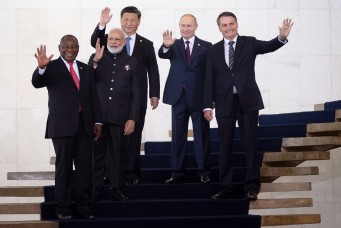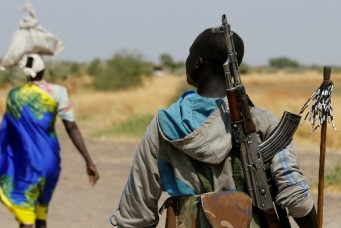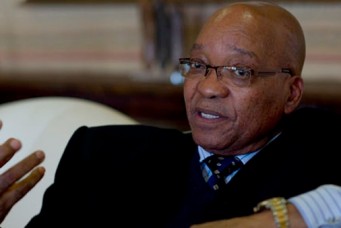Rise of the South
Within the decade, the United States will no longer be the largest economy in the world. What will end, and has already begun to end, is not U.S. power but U.S. primacy.
Within the decade, the United States will no longer be the largest economy in the world. According to the International Monetary Fund, that honor will go to China. Already we sense the shift—bazaars and malls across the world have the feel of America, but the goods in them are made in China.
Reaction to this evidence has taken many forms. There is a literature of catastrophism—an anticipation of the Decline of America—in which the imploded U.S. economy will lead to a loss of structural power, and to increased use of U.S. military power to preserve the country’s authority.
There is the literature of revival—an anticipation of the Second American Century. This view holds that the U.S. economy is resilient and the power of the dollar sacrosanct. It holds faith in American ingenuity’s ability to destroy old sectors and emerge with new inventions.
Both these extreme views contain elements of truth. Since the 1970s, U.S. capital has moved away from investments in industry to speculations in financial instruments, and to outlays in overseas industrial ventures. What remains in the U.S. are enclaves of high-wage ingenuity, such as scientists who invent new bio-medical or communicative devices that are patented. The rents from these patents form one of the engines of U.S. Gross Domestic Product.
However, these patented inventions can only make money when they are produced and sold, and mass production takes place overseas, where wages are lower and sub-contracting makes union politics less dangerous for investors. While U.S. GDP can flourish, its employment situation is abysmal. This is what is called “jobless growth.” If you read the U.S. economy from this perspective, rent collection alongside structural unemployment, it will neither collapse nor revive in any simplistic fashion.
What will end, and has already begun to end, is not U.S. power but U.S. primacy. The idea of primacy has its roots in the post-World War II era. In 1947, the U.S. State Department’s Policy Planning staff argued, “To seek less than preponderant power would be to opt for defeat. Preponderant power must be the object of U.S. policy.” The USSR was the brake to this strategy. Even though in military and economic terms the USSR could not compete with the West, it rendered primacy a less important strategy than deterrence or containment.
With the decline of the USSR in the late 1980s, the quest for U.S. primacy accelerated. On the day that Saddam Hussein’s forces entered Kuwait (August 2, 1990), President George H. W. Bush gave a speech on his Defense Planning Guidance (a task force chaired by Dick Cheney). The Guidance noted, “Our first objective is to prevent the re-emergence of a new rival, either on the territory of the former Soviet Union or elsewhere, that poses a threat on the order of that posed formerly by the Soviet Union.” Saddam Hussein’s entry into Kuwait tested U.S. primacy and inaugurated the Long Gulf War, which continues to this day. Ten years later, by 9/11, U.S. primacy began to flounder.
Four factors principally explain the gradual demise of U.S. primacy:
1. The U.S. economy, weakened through capitalism’s punishing drive toward joblessness.
2. The immense burden in social wealth of the discovery that U.S. military power can easily destroy a country (e.g., Afghanistan and Iraq) but it cannot form it in its image.
3. Social movements in Latin America and elsewhere that challenged the economic and political primacy of the United States.
4. The emergence of southern locomotives, such as the BRICS states (Brazil, Russia, India, China, South Africa), that push against U.S. primacy in international institutions (e.g., World Trade Organization, UN Security Council), as well as against a U.S.-driven policy agenda (to protect the dollar as the world’s currency and to protect intellectual property rights).
These developments have asphyxiated U.S. uni-polarity. One of the most interesting admissions in the 2012 U.S. National Intelligence Council’s report is the view that, “by 2030, no country—whether the U.S., China, or any other large country—will be a hegemonic power.” The intelligence officials forecast a “diffusion of power” among states and to individuals, with democracy as the vector for this transfusion. Fascinatingly, the report makes no mention of the BRICS bloc. What the council cannot fathom is a world order premised not so much on chaotic diffusion as a new kind of multi-polarity, in which countries like China and India will collaborate through the BRICS formation to settle inter-state and non-state problems.
The BRICS bloc has the potential of putting an end to the era of U.S. primacy. In the conference halls of the UN, the IMF, and the World Bank, new policy ideas are being bandied about, such as alternatives to the dollar as the main international currency, and of ratings agencies to compete with Moody’s and Standards & Poor’s. But these new developments are slow. A shift can only occur if regional developments such as those in Latin America are emulated elsewhere, and if those in concert can put pressure on the Global North and South’s elites to surrender their neo-liberal policy prescriptions.
But to get there, the South must translate their million social movements into political power. False starts in the Arab world are a setback but not a defeat. Impossibly complex struggles in Eastern Europe and South-East Asia indicate that the people are energetic, but the direction of their political formations and campaigns is unclear. Nevertheless, this is the way of the future, the possible history of the Global South, as regional entities under pressure from social movements fashion themselves for self-governance once U.S. power begins to drift homewards.
Vijay Prashad is the Edward Said Chair of American Studies at the American University of Beirut. This essay is adapted from the afterword of the Verso paperback edition of his most recent book, The Poorer Nations: A Possible History of the Global South.




